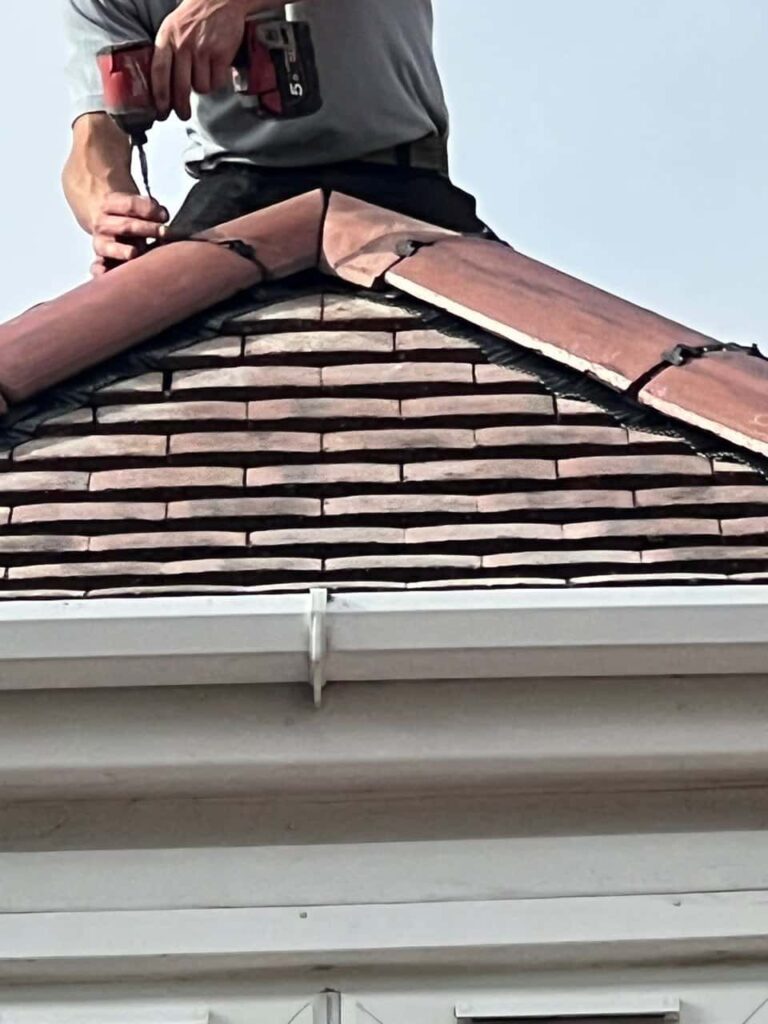As a homeowner, one of the most important decisions you’ll face regarding your roof is whether to opt for a quick repair or invest in a full roof replacement. While minor issues can often be resolved with a simple fix, there are times when a more permanent solution is necessary to protect your home and ensure long-term safety. At Isleham Roofing Repairs, we offer expert advice and services in Isleham, Cambridgeshire, to help you make the right choice for your roof. In this blog post, we’ll guide you through the signs that indicate when a roof replacement might be the better option over a quick fix.
Quick Fixes: When They’re Appropriate
There are situations where a quick repair is all that’s needed to restore the functionality of your roof. If the damage is minimal and localised, such as a few missing or cracked tiles, a patch-up job can often do the trick. Some examples of when a quick fix may be suitable include:
- Minor Leaks: If a small leak is caught early and limited to a specific area, a professional roofer can patch it up effectively, preventing further damage.
- Damaged Flashing: Flashing around chimneys, vents, and skylights can occasionally loosen or crack. Repairing or replacing the flashing can prevent water from seeping into the roof.
- Isolated Shingle or Tile Damage: If only a few tiles or shingles are damaged by strong winds or fallen branches, a quick replacement may be sufficient to restore the integrity of your roof.
Quick repairs can extend the life of your roof and prevent more significant issues from developing. However, they are not always the long-term solution, especially if your roof is showing signs of ageing or if underlying issues exist.
When a Roof Replacement is the Best Option
There are certain circumstances when a quick fix will only act as a temporary bandage, and a full roof replacement is the most cost-effective, long-term solution. Here are some key signs that it might be time to consider upgrading your roof:
- Frequent Repairs
If you find yourself calling for repairs regularly, it’s a sign that your roof may be nearing the end of its lifespan. Repeated patch-ups can add up, and over time, it’s often more economical to replace the roof entirely. Constant repairs also indicate that underlying problems, such as rotting underlay or structural issues, may be going unaddressed.
- Age of the Roof
Roofs have a limited lifespan, typically ranging between 20 and 30 years, depending on the materials used. If your roof is approaching or has surpassed this age, it may no longer be able to provide the protection your home needs. Older roofs are more prone to leaks, sagging, and damage, making replacement a safer and more reliable option.
At Isleham Roofing Repairs, we can assess the condition of your roof and provide recommendations based on its age and current state. Investing in a new roof can provide peace of mind and long-lasting durability.
- Widespread Damage
If your roof has extensive damage, such as large areas of missing or cracked tiles, widespread leaks, or visible sagging, a quick fix won’t suffice. A roof with this level of damage is not only ineffective but can also pose safety risks to your home. Water damage, in particular, can weaken the roof’s structure, leading to further deterioration over time.
In these cases, a full roof replacement is the best course of action to ensure your home remains secure and protected from the elements.
- Water Damage and Mold Growth
Water stains on your ceiling or walls, along with visible signs of mould, indicate that your roof’s water barrier has been compromised. Once moisture penetrates your roof’s structure, it can lead to rot, mould growth, and even structural damage to your home. A simple patch-up won’t address the deeper issues caused by water damage, and a full replacement may be necessary to prevent further deterioration.
- Energy Efficiency Concerns
If your home’s energy bills are rising and you’ve noticed it’s harder to maintain a comfortable indoor temperature, your roof’s insulation and ventilation may be failing. Older roofs often lack the energy-efficient features of modern materials, which means heat can escape in the winter, and your home may overheat in the summer.
Upgrading to a new, energy-efficient roof can help lower your energy bills and improve the overall comfort of your home. Modern roofing materials offer better insulation and energy-saving properties, making replacement a wise long-term investment.
The Benefits of Roof Replacement
While a roof replacement may seem like a significant investment, it offers numerous benefits that make it worthwhile:
- Increased Property Value: A new roof can enhance your home’s curb appeal and increase its resale value.
- Improved Safety: A new roof eliminates the risk of leaks, water damage, and structural issues, ensuring your home is well-protected.
- Energy Efficiency: Modern roofing materials improve insulation, helping to regulate your home’s temperature and lower energy bills.
- Long-Term Durability: Replacing your roof now can save you money in the long run by preventing costly repairs and extending the life of your home’s structure.
Conclusion
Deciding between a quick fix and a full roof replacement depends on the extent of the damage and the age of your roof. While small repairs can be effective for minor issues, a replacement is often the best option for long-term peace of mind, especially if your roof is showing signs of extensive wear. At Isleham Roofing Repairs, we provide expert assessments and recommendations to help you make the right choice for your home. Contact us today to schedule an inspection and learn more about how we can keep your roof in top condition.
Call us on: 01638 591 695
Click here to find out more about Isleham Roofing Repairs
Click here to complete our contact form and see how we can help with your roofing needs.

